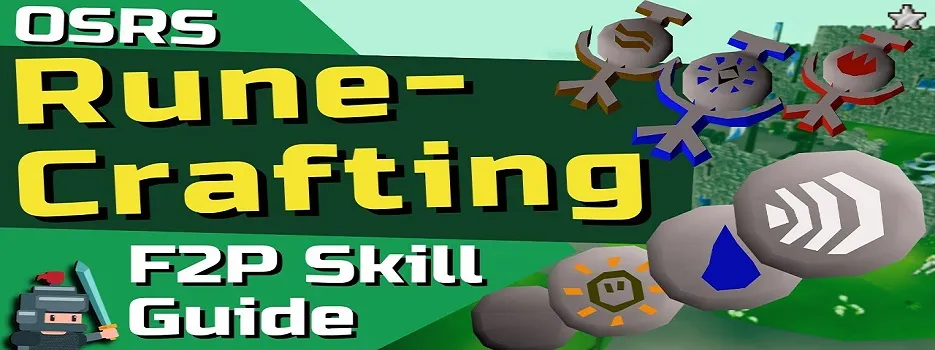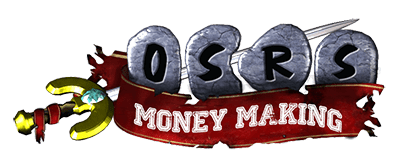Your cart is empty
OSRS Crafting Training F2P Ultimate Guide

Crafting in Old School RuneScape (OSRS) is a versatile skill that allows free-to-play (F2P) players to create jewelry, armor, and other items. While it can be slow or costly to train, this guide provides the most efficient and budget-friendly methods to level up Crafting from 1 to 99 in F2P. Whether you’re an Ironman or a main account, these strategies, optimized for 2025, will help you progress without breaking the bank. Let’s dive into the best ways to train Crafting in F2P, including quests, locations, and profitable methods.
Crafting is essential for creating useful items like jewelry for teleports (e.g., Games Necklace) and ranged armor. It’s also a requirement for quests and diaries, such as Misthalin Mystery and the Falador Diary. For Ironmen, Crafting is critical for self-sufficiency, while mains can profit from selling crafted items. Despite being slower in F2P compared to P2P, with the right methods, you can achieve decent experience rates and even make money.
Key Benefits of Crafting
- Quest Progression: Required for quests like Misthalin Mystery (600 XP) and Goblin Diplomacy (200 XP).
- Jewelry Crafting: Create teleportation items like Rings of Dueling.
- Profit Potential: Gold jewelry and cut gems can be sold for profit.
- Ironman Utility: Craft your own gear and items without relying on trades.
Starting Out: Levels 1–20

The early levels of Crafting in F2P are straightforward and can be boosted quickly with quests and low-cost methods. Completing quests is the most efficient way to skip the initial grind, while leather crafting offers a fast alternative for those with some gold.
Questing for Early Levels
Three F2P quests provide Crafting experience, giving you a head start:
- Sheep Shearer: 150 XP
- Goblin Diplomacy: 200 XP
- Misthalin Mystery: 600 XP
Completing all three quests boosts you from level 1 to level 8, requiring no additional training. These are especially useful for Ironmen or players with limited resources. Pro Tip: Prioritize Misthalin Mystery for its high XP reward.
Leather Crafting (Levels 1–20)
If you skip quests or need to train manually, crafting leather items is the fastest low-level method in F2P. You’ll need a needle, thread, and leather, which can be bought from the Grand Exchange or obtained by tanning cowhides in Al Kharid (1 GP per hide). A threadless needle from Death on the Isle (P2P quest) can save thread, but it’s not accessible in F2P.
| Item | Level Required | XP per Item | Leather Needed (to Level 20) |
|---|---|---|---|
| Leather Gloves | 1 | 13.8 | 112 |
| Leather Boots | 7 | 16.2 | 50 |
| Leather Cowl | 9 | 18.5 | 30 |
| Leather Body | 14 | 25 | 25 |
Total Leather Needed: Approximately 217 leather, costing around 60,000–70,000 GP based on 2025 Grand Exchange prices (leather ~278 GP each). XP Rate: ~20,000 XP/hour.
Efficient Methods: Levels 20–40
From level 20, you can diversify your training with gem cutting, jewelry crafting, or pottery. Gem cutting is the fastest, while jewelry offers profit potential. Your choice depends on budget and goals.
Cutting Gems (Fastest XP)
Cutting gems with a chisel is the quickest way to gain Crafting XP in F2P, offering up to 50,000 XP/hour at higher levels. Buy uncut gems from the Grand Exchange and cut them anywhere, as no special equipment is needed. However, cutting opals (Level 1) and jades (Level 13) can fail, resulting in crushed gems, so stick to sapphires or emeralds for reliability.
- Uncut Sapphire (Level 20): 50 XP per cut, ~200 GP loss per gem.
- Uncut Emerald (Level 27): 67.5 XP per cut, ~300 GP loss per gem.
- Uncut Ruby (Level 34): 85 XP per cut, ~400 GP loss per gem.
Banknote Method: To save inventory space, convert uncut gems to banknotes at a bank, un-note them to cut, and deposit cut gems via a deposit box. This method boosts efficiency. From levels 20–40, cutting sapphires costs ~1M GP but takes under 2 hours.
Gold Jewelry (Profitable)
Crafting gold jewelry is slower but can be profitable. Use gold bars and a jewelry mould (ring, necklace, or amulet) at a furnace, preferably in Edgeville for its proximity to a bank. Gold amulets (unstrung) are the most cost-effective.
- Gold Ring (Level 5): 15 XP, ~100 GP profit per ring.
- Gold Necklace (Level 6): 20 XP, ~80 GP profit per necklace.
- Gold Amulet (Level 8): 30 XP, ~50 GP profit per amulet.
XP Rate: ~15,000–20,000 XP/hour. Sell crafted jewelry at Grum’s Gold Exchange in Port Sarim for maximum profit.
Advanced Training: Levels 40–99
At level 40, the Crafting Guild becomes a game-changer for Ironmen, while gem cutting and jewelry remain viable for mains. The focus shifts to balancing speed, cost, and profit.
Utilizing the Crafting Guild
The Crafting Guild (Level 40 entry) is ideal for Ironmen, offering clay rocks, a water source, a potter’s wheel, a pottery kiln, and two spinning wheels. Sheep north of the guild provide wool for spinning. Mine clay, soften it with water, craft pots on the wheel, and fire them in the kiln. This method yields 650–720 XP per run with no banking required, making it self-sufficient but slow (~10,000 XP/hour).
High-Level Gem Cutting
Continue cutting rubies (Level 34, 85 XP) or diamonds (Level 43, 107.5 XP) for the fastest XP. Diamonds offer up to 60,000 XP/hour but are costly (~500 GP loss per gem). Use the banknote method near a bank and deposit box for efficiency. From level 40 to 99, expect to spend ~20–25M GP cutting diamonds, taking ~200 hours.
Stringing Amulets (AFK Option)
Stringing unstrung amulets with balls of wool is a low-effort method, granting 4 XP per amulet. Near a bank (e.g., Lumbridge), you can string 2,500 amulets per hour, yielding 10,000 XP/hour. This is AFK-friendly but slow and unprofitable, as balls of wool cost ~50 GP each. Use for short bursts when multitasking.
Profitable and Ironman Strategies
For players looking to make money or play self-sufficiently, combining Crafting with other skills or focusing on high-demand items is key.
Gold Jewelry for Profit
Crafting gold amulets and selling them at Grum’s Gold Exchange remains profitable. At level 40, combine this with mining and smelting gold ore for a multi-skill training method. Expect ~50,000–100,000 GP/hour profit and 15,000 Crafting XP/hour. This is ideal for Ultimate Ironmen who can’t trade.
Ironman Crafting Path
Ironmen should focus on the Crafting Guild after level 40. Mine clay in the guild, craft pottery, and fire it on-site. Alternatively, gather wool from sheep, spin it into balls at the guild’s spinning wheels, and string amulets. For jewelry, mine gold ore in the guild and smelt it at Edgeville’s furnace. This method is slow but sustainable, yielding 10,000–15,000 XP/hour.
Tips and Tricks for Efficient Training
Maximize your Crafting training with these tips:
- Bank Settings: Enable deposit lock to avoid banking your chisel or needle accidentally.
- Edgeville Furnace: Use for jewelry crafting due to its proximity to a bank.
- Lumbridge Spinning Wheel: Spin wool downstairs from the bank for quick access.
- Grand Exchange: Check prices daily, as gem and leather costs fluctuate.
- Multi-Skill Training: Combine Crafting with Mining or Smithing for efficiency.
Cost Estimate to 99: Cutting gems (fastest) costs ~25M GP, while leather and jewelry methods cost ~5–10M GP with potential profits. Total time to 99 varies from 200 hours (gems) to 400 hours (jewelry/AFK methods).
With these strategies, you can train Crafting in F2P efficiently, whether you’re chasing 99, quest requirements, or profits. Start with quests, transition to leather or gems, and leverage the Crafting Guild for Ironman accounts. Happy crafting!

